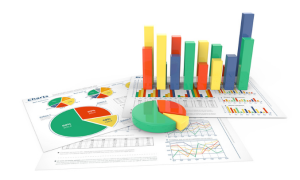Table of Contents
Ad hoc reporting is the process of generating reports based on the user’s specific needs. These reports are not part of a predefined set but are created as needed. Because ad hoc reporting is not constrained by predefined formats, it can be more flexible and responsive to changing needs. Keep reading to learn more about ad hoc reporting.
What is Ad Hoc Reporting?

So, what does ad hoc reporting mean? Ad hoc reporting is reporting that is specific to a particular need or situation. It is often requested by someone who is not a regular user of data analysis tools and is therefore not familiar with the standard reporting process.
Ad hoc reporting can be used to answer specific questions or to provide more detailed information about a particular issue. Ad hoc reporting can be done using various digital tools, including Microsoft Excel, SQL Server Reporting Services, or Crystal Reports.
It is important to note that ad hoc reporting can be time-consuming and may require specialized skills or knowledge. Ad hoc reporting can be used for various purposes, including performance monitoring, problem-solving, and decision-making.
What are the benefits of Ad Hoc Reporting?
 There are several benefits of ad hoc reporting. First, ad hoc reporting allows businesses to quickly and easily generate reports specific to the moment’s needs. This can be helpful in situations where time is of the essence, and traditional, pre-determined reports are not feasible.
There are several benefits of ad hoc reporting. First, ad hoc reporting allows businesses to quickly and easily generate reports specific to the moment’s needs. This can be helpful in situations where time is of the essence, and traditional, pre-determined reports are not feasible.
Second, ad hoc reporting can help businesses to better understand their data. By creating reports, businesses can more easily identify trends and patterns in their data. This can help make more informed business decisions.
Third, ad hoc reporting can help to know the importance of communication and collaboration in business. By allowing team members to generate reports specific to their needs, ad hoc reporting can help to improve communication and collaboration within businesses.
Finally, ad hoc reporting can help businesses to save time and money. Businesses can save time and money by not having to generate traditional, pre-determined reports.
What are the sections of an Ad Hoc report?
The sections of an ad hoc report can vary depending on the purpose of the report. However, most ad hoc reports typically have an introduction, background, findings, recommendations, and conclusion.
The introduction should provide a brief overview of the purpose of the report, as well as the scope of the investigation. It should also identify any significant findings or conclusions of the report. The background section should provide a detailed description of the events that led up to the creation of the report.
It should also identify any relevant parties or organizations involved in the incident. The findings section should present the facts of the case, including any relevant evidence or testimony. It should also outline any conclusions drawn from this evidence.
The recommendations section should present any solutions or courses of action that the report’s authors believe should be taken to address the findings. The conclusion should summarize the findings and recommendations of the report and identify any next steps that should be taken.
What industries use Ad Hoc reports?

Many industries use ad hoc reports. The most common industries that use ad hoc reporting are retail, banking and financial services, healthcare, and manufacturing. However, it’s important to note that almost any industry can use ad hoc reports, depending on the business needs. When it comes to specific use cases, retail businesses might use ad hoc reports to track inventory levels and sales data to make better purchasing decisions.
In contrast, banks might use them to monitor customer journey and fraud prevention. In the healthcare industry, ad hoc reports might be used to track patient data and treatment outcomes to improve patient care. And in the manufacturing sector, ad hoc reports might be used to monitor production output and quality control.


